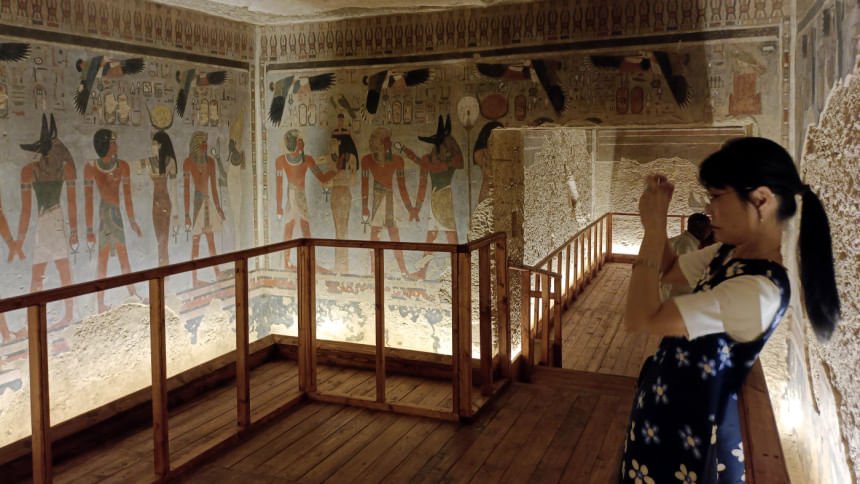The burial site of Pharaoh Amenhotep III, located in the Valley of the Kings and Queens in southern Egypt, was officially opened to the public yesterday following an extensive restoration period. Sherif Fathy, Egypt’s minister of tourism and antiquities, presented the renovated tomb to the media. Dating back over 3,000 years, the tomb’s history dates back to its documentation in 1799 during the Napoleonic conquest of Egypt. Over the years, the tomb experienced excavation, looting, and significant damage, prompting a restoration project supported by the Japanese government and UNESCO.
Situated on the western bank of the Nile River opposite Luxor, the tomb features intricate wall paintings that are considered some of the finest among the royal tombs of the Eighteenth Dynasty, as noted by Japan’s UNESCO mission. The structure had faced the threat of collapse due to decades of deterioration.
Amenhotep III came to power as a young ruler and reigned for approximately forty years, overseeing a period of prosperity, stability, and artistic excellence before his death in 1349 BC at the age of 50. He was interred in the Theban Necropolis, where various Ancient Egyptian royalty and dignitaries were buried from the 16th to the 11th centuries BC.
Following excavations by French and British teams in 1799 and 1915, numerous artifacts from the tomb were transported to museums such as the Louvre in Paris, the Metropolitan Museum in New York, and Highclere Castle in the UK. Amenhotep III’s mummy and sarcophagus are housed in Cairo’s National Museum of Egyptian Civilisations, with the Egyptian Museum in Tahrir and the Grand Egyptian Museum in the capital displaying colossal statues of the pharaoh alongside his wife.
Near the tomb, the mortuary temple of Amenhotep III, Kom al-Hetan, has suffered considerable damage due to annual Nile flooding. However, the Colossi of Memnon, two massive granite statues, remain intact, welcoming visitors to the ancient valley.

